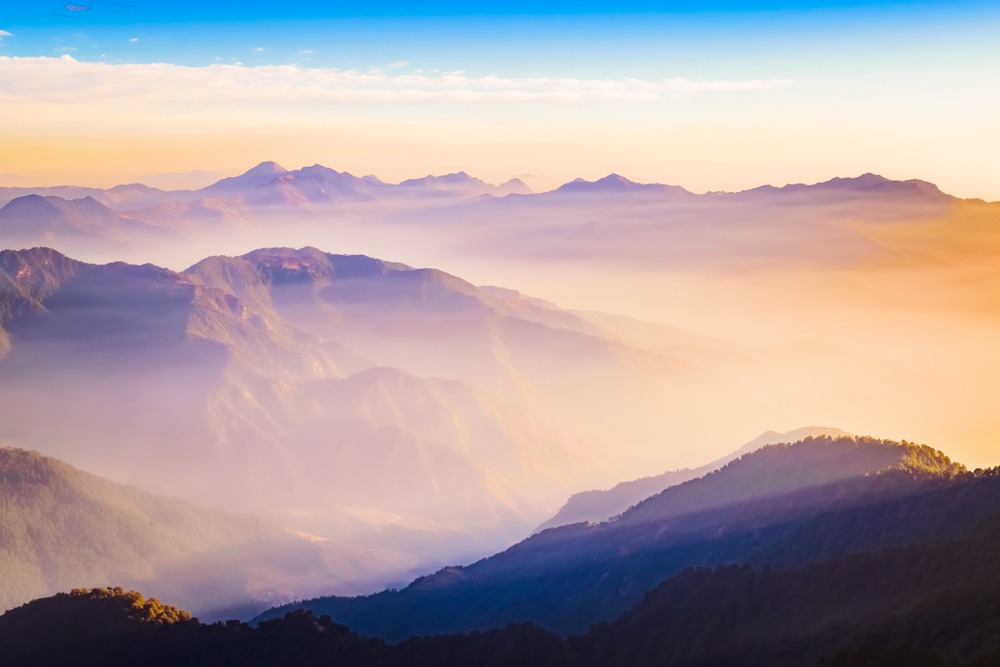
1. Introduction For Nag Tibba Trek
Welcome to the realm of Nag Tibba, where adventure meets serenity amidst the towering Garhwal Himalayas. I am glad to share this memorable experience with you!
Nag Tibba, translating to “Serpent’s Peak,” stands tall at 9,915 feet amidst the picturesque Garhwal Himalayas. This journey provides the ideal balance of action and relaxation, making it a must-do for nature lovers and thrill seekers alike.
2. Getting Ready: Preparing for the Adventure Of Nag Tibba Trek
Before we hit the trail, let’s make sure we’re physically and mentally prepared. Regular workouts and a positive mindset are our allies for the journey ahead.
Physical preparation is crucial for any trek, and Nag Tibba is no exception. Incorporate cardio exercises and strength training into your routine to build endurance and stamina. Aim for at least 30 minutes of moderate to vigorous physical activity on most days of the week.
Equally important is mental preparedness. Trekking can be challenging, both physically and mentally, so cultivate a positive mindset and be prepared to face obstacles with determination and resilience.
3. Starting Point: Dehradun to Pantwari
Our adventure commences in the bustling city of Dehradun. From there, a scenic drive leads us to Pantwari, the gateway to Nag Tibba. Prepare to take in the splendor of the countryside!
Dehradun, the capital city of Uttarakhand, serves as the starting point for our Nag Tibba adventure. Surrounded by the majestic Himalayas, Dehradun offers a perfect blend of urban amenities and natural beauty.
From Dehradun, we embark on a picturesque drive to Pantwari, a quaint village nestled in the foothills of the Garhwal Himalayas. The journey takes approximately 3-4 hours, offering mesmerizing views of the countryside along the way.
4. Trail Tales: Trekking from Pantwari to Nag Tibba Trek
As we embark on the trail, we’ll be greeted by lush forests, babbling brooks, and sweeping vistas. Remember to pace yourself, take breaks, and relish every moment.
The trail from Pantwari to Nag Tibba is approximately 8-9 kilometers long, offering a moderate level of difficulty suitable for beginners and seasoned trekkers alike. The terrain is diverse, ranging from dense forests to open meadows, with occasional steep ascents.
Throughout the trek, keep an eye out for the rich biodiversity of the region, including diverse flora and fauna. You may encounter species like oak, rhododendron, and various bird species along the way.
5. Campsites and Accommodations
Camping under the starlit sky adds a touch of magic to our Nag Tibba experience. Along the way, we’ll find cozy campsites offering basic amenities for a comfortable stay.
Several campsites are scattered along the Nag Tibba trail, providing options for overnight stays amidst nature’s embrace. These campsites offer basic amenities such as tents, sleeping bags, and meals, allowing trekkers to recharge before continuing their journey.
One of the most popular camping spots is located near Nag Tibba Base Camp, offering stunning views of the surrounding mountains and valleys. As night falls, gather around the campfire, share stories with fellow trekkers, and marvel at the star-studded sky above.
If you’re planning a Nag Tibba Trek and looking for a reliable company to guide you through this unforgettable adventure, look no further than The Searching Souls. With years of experience in organizing treks and expeditions in the Garhwal Himalayas, The Searching Souls is your trusted partner for exploring the majestic Nag Tibba.
6. Gear Essentials: What to Pack for Nag Tibba Trek
Packing smartly is essential for a hassle-free trek. Don’t forget to bring sturdy hiking boots, warm layers, snacks, and of course, a camera to capture our unforgettable moments.
Packing for Nag Tibba trek requires careful consideration of essential gear and clothing to ensure comfort and safety throughout the journey. Here’s a checklist of gear essentials to pack:
Hiking Boots:
Invest in a pair of sturdy hiking boots with good ankle support and a rugged sole to navigate the varied terrain of Nag Tibba trail.
Clothing Layers:
Pack lightweight, moisture-wicking clothing layers that can be easily layered for warmth and comfort. Include items like a thermal base layer, fleece jacket, waterproof shell, and insulated pants.
Backpack:
Choose a comfortable, well-fitted backpack with padded shoulder straps and a hip belt to distribute weight evenly and reduce strain on your back.
Water Bottles:
Stay hydrated on the trail by carrying at least two liters of water per person, stored in durable, reusable water bottles.
Snacks:
Pack high-energy snacks like nuts, dried fruits, energy bars, and chocolate to fuel your trek and keep hunger at bay.
First-Aid Kit:
Carry a compact first-aid kit containing essential items like adhesive bandages, antiseptic wipes, pain relievers, blister pads, and any personal medications you may need.
Navigation Tools:
Bring a map, compass, or GPS device to navigate the trail confidently and avoid getting lost in unfamiliar terrain.
Headlamp or Flashlight:
Don’t forget to pack a headlamp or flashlight with extra batteries for nighttime navigation and emergencies.
Trekking Poles:
Consider bringing trekking poles to reduce strain on your knees and improve stability on uneven terrain, especially during steep ascents and descents.
Camera:
Capture the breathtaking beauty of Nag Tibba with a lightweight, waterproof camera or smartphone to preserve memories of your adventure.
By packing smartly and prioritizing essential gear, you’ll ensure a comfortable and enjoyable trekking experience on Nag Tibba trail.
7. Navigating the Terrain: Tips for a Smooth Trek
Stay hydrated, stick to the marked trails, and be respectful of the local environment. By following these simple tips, we’ll ensure a smooth and enjoyable trekking experience.
As we navigate the diverse terrain of Nag Tibba trail, it’s essential to stay vigilant and mindful of our surroundings. Here are some suggestions for a smooth trek:
Hydration:
Stay hydrated by drinking water regularly throughout the trek, even if you don’t feel thirsty. Dehydration can sneak up on you, especially at higher altitudes, so make it a habit to drink at least two liters of water per day.
Trail Etiquette:
Stick to designated trails to minimize environmental impact and preserve the natural beauty of the region. Avoid taking shortcuts or trampling on vegetation, and always pack out any trash or waste.
Weather Awareness:
Be prepared for changing weather conditions by dressing in layers and carrying waterproof clothing. Check the weather forecast before setting out on the trek, and be prepared to adjust your plans accordingly.
Altitude Acclimatization:
Take it slow and allow your body time to acclimatize to the higher altitude as you ascend towards Nag Tibba’s peak. Listen to your body, and if you experience symptoms of altitude sickness like headache, nausea, or dizziness, descend to a lower elevation immediately.
Wildlife Awareness:
Respect the local wildlife and maintain a safe distance from animals encountered along the trail. Avoid feeding or approaching wild animals, and if you spot any wildlife, observe from a safe distance without disturbing their natural behavior.
Leave No Trace:
Practice Leave No Trace principles by minimizing your impact on the environment and leaving the trail cleaner than you found it. Pack out all trash, avoid picking flowers or disturbing wildlife, and be considerate of other trekkers sharing the trail.
By following these tips and respecting the natural environment, we can enjoy a smooth and memorable trekking experience on Nag Tibba trail.
8. The Summit: Reaching the Peak
As we ascend towards the summit, the landscape becomes more rugged, and the air thinner. Let’s take it slow, breathe deeply, and savor the moment as we conquer Nag Tibba’s peak together.
The final stretch of the Nag Tibba trek takes us to the summit, where breathtaking views and a sense of accomplishment await. Here’s what to expect as we approach the peak:
Steep Ascents:
The trail towards the summit features steep ascents and rocky terrain, requiring concentration and determination to navigate safely. Take it slow, conserve your energy, and use trekking poles for added stability if needed.
Thin Air:
As we ascend higher, the air becomes thinner, making each step feel more challenging. Pace yourself, take frequent breaks to catch your breath, and listen to your body’s signals. Symptoms of altitude sickness like headache, nausea, and fatigue may occur at higher elevations, so be prepared to adjust your pace accordingly.
Panoramic Views:
As we near the summit, the surrounding landscape unfolds in all its glory, offering panoramic views of snow-capped peaks, verdant valleys, and distant villages below. Take a moment to pause, soak in the scenery, and appreciate the beauty of the Himalayas.
Sense of Accomplishment:
Reaching the summit of Nag Tibba is a monumental achievement, symbolizing our perseverance, determination, and resilience. Celebrate this milestone with a sense of pride and gratitude for the journey that brought us here.
Summit Rituals:
Traditionally, trekkers mark their arrival at the summit of Nag Tibba with rituals like offering prayers, hoisting flags, or simply taking a moment of silence to reflect on the journey. Whatever ritual speaks to you, embrace it wholeheartedly and cherish the memories of this unforgettable experience.
As we stand atop Nag Tibba’s peak, surrounded by the vast expanse of the Himalayas, let’s revel in the sense of accomplishment and wonder at the beauty of the world below.
9. Enjoying the View: Highlights from Nag Tibba
From the summit, let’s feast our eyes on the breathtaking panorama of snow-capped peaks and verdant valleys below. It’s a view that will stay etched in our memories forever.
The view from Nag Tibba’s summit is nothing short of spectacular, offering a 360-degree panorama of the surrounding Himalayan landscape. Here are some highlights to watch for:
Snow-Capped Peaks:
To the north, the snow-capped peaks of the Garhwal Himalayas stretch as far as the eye can see, their majestic summits glistening in the sunlight. Among them, prominent peaks like Swargarohini, Bandarpoonch, and Kedarnath stand out in all their glory, commanding awe and admiration.
Verdant Valleys:
To the south, lush valleys and meandering rivers carve their way through the rugged terrain, creating a patchwork of greenery that contrasts beautifully with the snowy peaks above. From this vantage point, we gain a newfound appreciation for the delicate balance of nature and the resilience of life in the Himalayas.
Quaint Villages:
Dotted throughout the landscape, quaint villages and hamlets offer a glimpse into the traditional way of life in the mountains. From our lofty perch, we can see smoke rising from chimneys, fields being tilled by hand, and villagers going about their daily routines with a sense of purpose and pride.
Endless Horizons:
As far as the eye can see, the horizon stretches endlessly, inviting us to dream, explore, and discover the wonders of the world beyond. From this elevated vantage point, we gain a sense of perspective and humility, realizing our place in the vast tapestry of the universe.
Sunrise and Sunset:
For those lucky enough to witness it, sunrise and sunset from Nag Tibba’s summit are truly magical experiences. As the sun bathes the landscape in golden hues, casting long shadows across the mountainside, we are reminded of the beauty and fleeting nature of each passing day.
As we linger atop Nag Tibba, taking in the splendor of the view before us, let’s pause to reflect on the beauty of the world and the privilege of being able to experience it firsthand.
10. Safety Measures: Staying Secure on the Trail
Safety first, always! Keep an eye on the weather, inform someone about our itinerary, and carry essential safety gear. Let’s respect the mountains and enjoy our adventure responsibly.
Safety is paramount when embarking on any trekking adventure, and Nag Tibba is no exception. Here are some safety steps to consider:
Weather Awareness:
Stay updated on weather forecasts before setting out on the trek, and be prepared for changing weather conditions. Pack appropriate clothing layers, including waterproof jackets and insulated layers, to stay warm and dry in case of rain or snow.
Inform Someone:
Before starting the trek, inform a trusted friend or family member about your itinerary, including your planned route, expected return time, and emergency contact information. This ensures that someone is aware of your location in the event of an emergency.
Carry Essential Gear:
Pack a basic first-aid kit containing essentials like adhesive bandages, antiseptic wipes, pain relievers, and any personal medications you may need. Additionally, carry navigation tools like a map, compass, or GPS device to help you stay on course.
Stay Hydrated and Nourished:
Drink plenty of water and stay hydrated throughout the trek to avoid dehydration and altitude sickness. Carry high-energy snacks like nuts, dried fruits, and energy bars to fuel your trek and keep hunger at bay.
Trekking in Groups:
Whenever possible, trek in a group or with a guide for added safety and support. A group provides companionship, assistance in case of emergencies, and added security when navigating unfamiliar terrain.
Respect Wildlife:
Respect the local wildlife and maintain a safe distance from animals encountered along the trail. Avoid feeding or approaching wild animals, and if you spot any wildlife, observe from a safe distance without disturbing their natural behavior.
By following these safety measures and exercising caution on the trail, we can ensure a secure and enjoyable trekking experience on Nag Tibba.
11. Conclusion
In conclusion, Nag Tibba Trek isn’t just about reaching the summit; it’s about embracing the journey, connecting with nature, and discovering our inner strength. So, are you ready to join me on this incredible adventure?
Nag Tibba Trek offers an unforgettable journey through the breathtaking landscapes of the Garhwal Himalayas, providing a perfect blend of adventure, serenity, and self-discovery. Whether you’re a seasoned trekker or a novice explorer, this trek promises an experience like no other, leaving you with memories to last a lifetime.
So, lace up your boots, pack your bags, and get ready to embark on this epic adventure to Nag Tibba. The mountains are calling, and adventure awaits!
12. FAQs
Q1: What is the best time to trek Nag Tibba?
The best time to trek Nag Tibba is from October to March when the weather is pleasant and the views are stunning.
Q2: Is Nag Tibba Trek suitable for beginners?
Yes, Nag Tibba Trek is perfect for beginners as it offers a moderate level of difficulty and doesn’t require prior trekking experience.
Q3: Are there any wildlife encounters during the trek?
While rare, encounters with wildlife like Himalayan bears and leopards are possible. However, sticking to designated trails and making noise usually keeps them at bay.
Q4: Can I trek Nag Tibba solo?
While trekking solo is possible, it’s recommended to go with a guide or join a trekking group for safety and navigation purposes.
Q5: Are there any medical facilities available along the trail?
Medical facilities are limited along the trail, so it’s essential to carry a basic first-aid kit and any personal medications you may need.
Let’s embark on this adventure of a lifetime and make unforgettable memories along the way!








